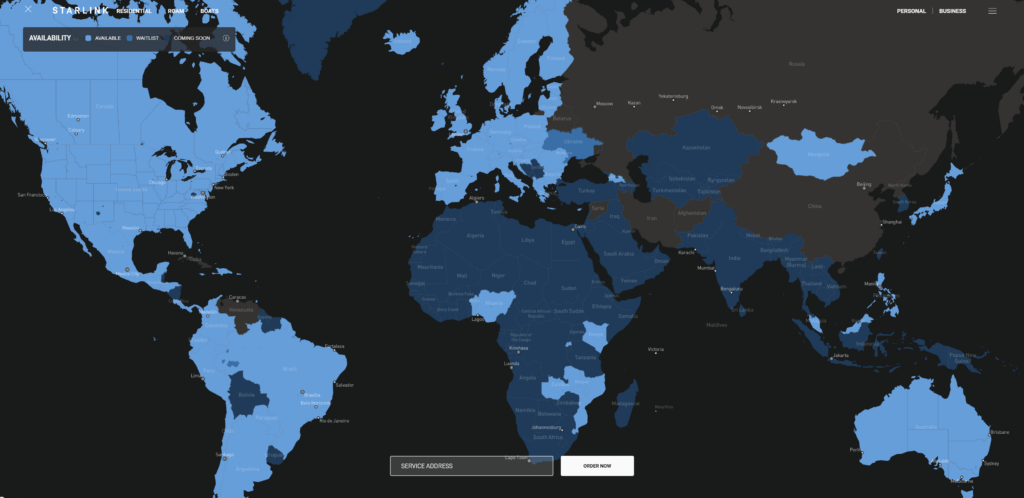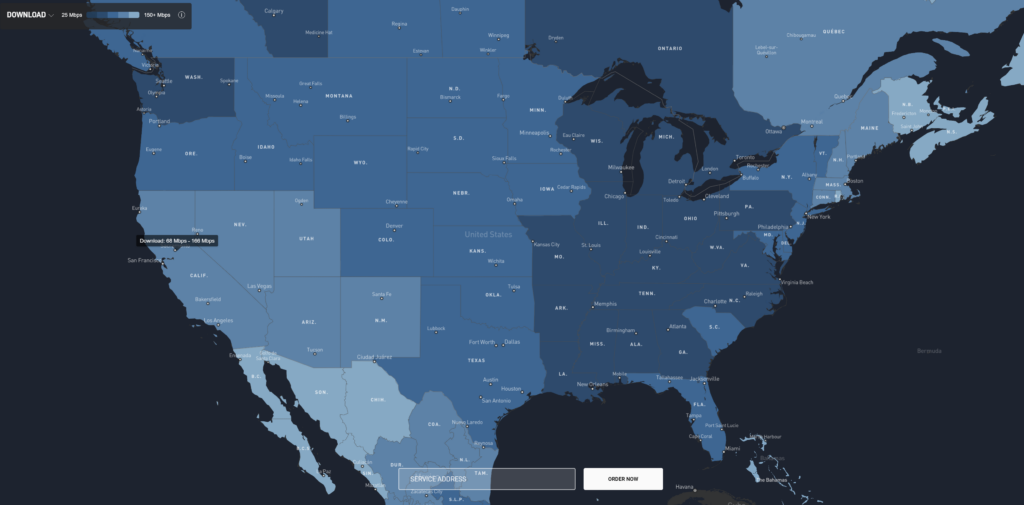Not all satellite internet providers use the same kind of satellites. Providers use two main types of satellites: Low-Earth orbit (LEO) and geostationary Earth orbit (GEO).
LEO satellites orbit the Earth at altitudes typically about 100 to 1,300 miles above the surface. These satellites are relatively close to the Earth, resulting in low-latency communication (good for online gaming and other high-demand online activities).
Starlink’s SpaceX satellites are LEO satellites, which is one of the reasons that the service has such high speeds and low latency. According to SatelliteInternet.com’s proprietary data gathered from almost a million different speed tests nationwide, Starlink’s average national speed is 48Mbps, and its average latency is just 47 ms.
Compared to the average latency for satellite internet (594–624 ms), that’s a significant improvement. Other providers, like Viasat and Hughesnet, use GEO satellites.
GEO satellites are positioned at a fixed point in the sky, approximately 22,000 miles above the Earth’s equator. These satellites move at the same rotational speed as the Earth, so they appear stationary when you look up at them. This characteristic makes them ideal for services that require constant coverage of a specific geographic area, such as television broadcasting and weather monitoring. The drawback is due to the distance from Earth, the latency is much higher.
While Starlink is currently the provider with the largest fleet of LEO satellites, Hughesnet is working on fusing LEO and GEO satellites into a single system. It turns out that Viasat is as well. Hopefully, this means satellite internet will be faster and more responsive in the coming years for all customers.


